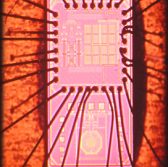 The Defense Advanced Research Projects Agency has unveiled a new set of minitiaturized electronic components DARPA has called “circulators” its researchers designed with doubled radio frequency capacity to give users increased web search and download speeds via wireless communications.
The Defense Advanced Research Projects Agency has unveiled a new set of minitiaturized electronic components DARPA has called “circulators” its researchers designed with doubled radio frequency capacity to give users increased web search and download speeds via wireless communications.
Columbia University electrical engineers Harish Krishnaswamy and Negar Reiskarimian led the project under DARPA’s Arrays at Commercial Timescales program and introduced the technology in the latest issue of Nature Communications, DARPA said Friday.
The researchers designed the circulators to feature a one-way forward flow of RF signals instead of the usual two-way RF traffic flow, which DARPA said helps minimize on-chip interference and keep received and transmitted signals segregated.
William Chappel, director of DARPA’s microsystems technology office, said a reduction of frequency needs in half gives the pinky nail-sized circulators the potential to double network capacity for forms of information such as voice and data.
DARPA noted the new technology could help optimize size and costs of antenna arrays for radar and signals intelligence in the future.




